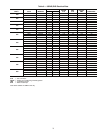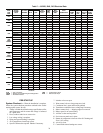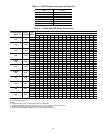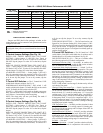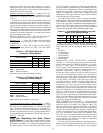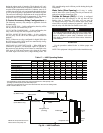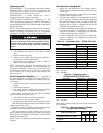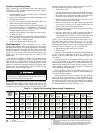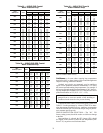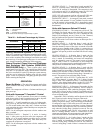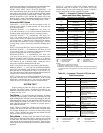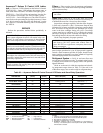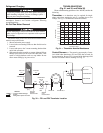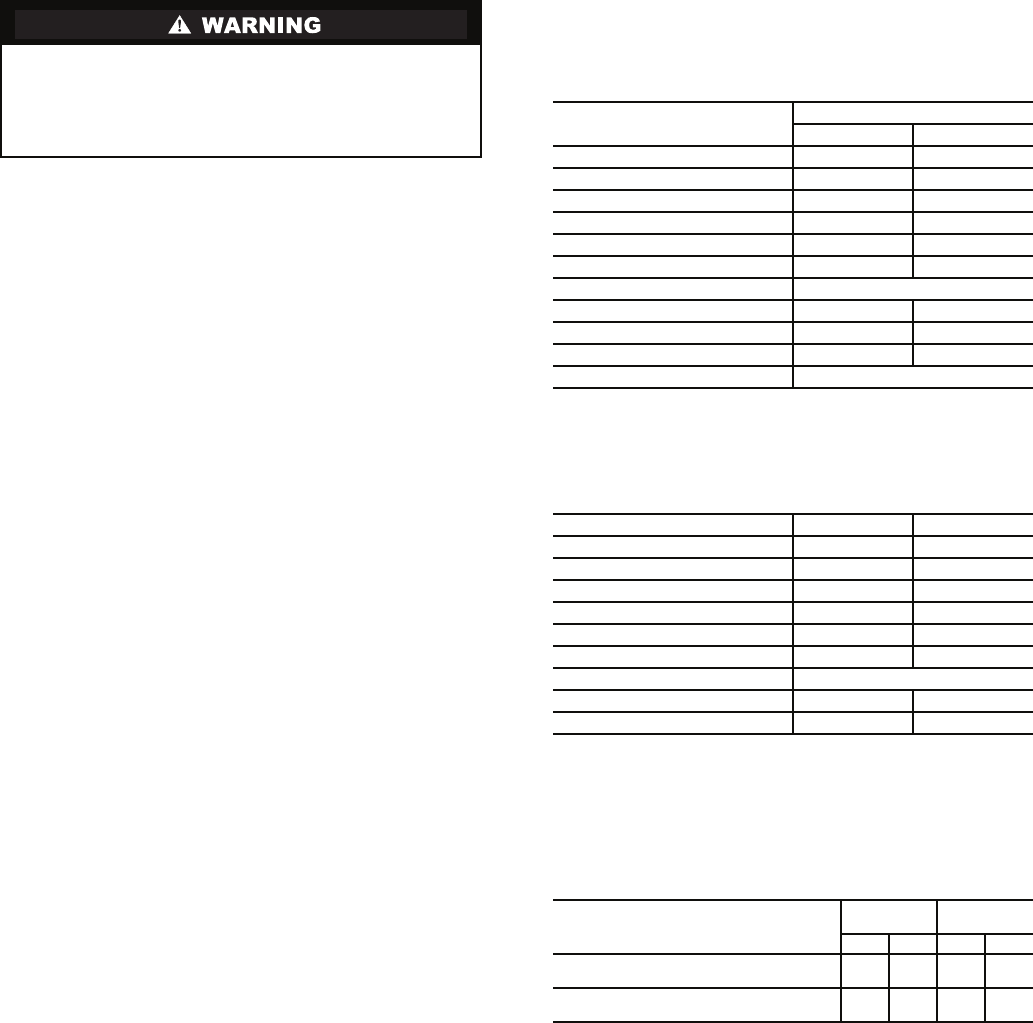
33
Operating Limits
ENVIRONMENT — This equipment is designed for indoor
installation ONLY. Extreme variations in temperature, hu-
midity and corrosive water or air will adversely affect the
unit performance, reliability and service life.
POWER SUPPLY — A voltage variation of ± 10% of
nameplate utilization voltage is acceptable.
UNIT STARTING CONDITIONS — Depending on the
model, units start and operate in an ambient temperature of
45 F with entering-air temperature at 40 F or 50 F, entering-
water temperature at 20 F or 50 F and with both air and water at
the flow rates used.
NOTE: These operating limits are not normal or continuous
operating conditions. Assume that such a start-up is for the
purpose of bringing the building space up to occupancy
temperature. See Tables 18 and 19 for operating limits.
1. Restore power to system.
2. Turn thermostat fan position to ON. Blower should
start.
3. Balance airflow at registers.
4. Adjust all valves to the full open position and turn on
the line power to all heat pump units.
5. Operate unit in the cooling cycle. Refer to Tables 18
and 19 for unit operating limits.
NOTE: Three factors determine the operating limits of a
unit: (1) entering-air temperature, (2) water temperature and
(3) ambient temperature. Whenever any of these factors are
at a minimum or maximum level, the other two factors must
be at a normal level to ensure proper unit operation. See
Tables 18 and 19.
Scroll Compressor Rotation — It is important to
be certain compressor is rotating in the proper direction. To
determine whether or not compressor is rotating in the prop-
er direction:
1. Connect service gages to suction and discharge pressure
fittings.
2. Energize the compressor.
3. The suction pressure should drop and the discharge
pressure should rise, as is normal on any start-up.
If the suction pressure does not drop and the discharge
pressure does not rise to normal levels:
1. Turn off power to the unit. Install disconnect tag.
2. Reverse any two of the unit power leads.
3. Reapply power to the unit and verify pressures are correct.
The suction and discharge pressure levels should now move
to their normal start-up levels.
When the compressor is rotating in the wrong direction, the
unit makes more noise and does not provide cooling.
After a few minutes of reverse operation, the scroll com-
pressor internal overload protection will open, thus activating
the unit lockout. This requires a manual reset. To reset, turn the
thermostat on and then off.
NOTE: There is a 5-minute time delay before the compressor
will start.
Unit Start-Up Cooling Mode
1. Adjust the unit thermostat to the warmest position.
Slowly reduce the thermostat position until the compres-
sor activates.
2. Check for cool air delivery at unit grille a few minutes
after the unit has begun to operate.
3. Verify that the compressor is on and that the water flow
rate is correct by measuring pressure drop through the
heat exchanger using P/T plugs. See Table 20. Check the
elevation and cleanliness of the condensate lines; any
dripping could be a sign of a blocked line. Be sure the
condensate trap includes a water seal.
4. Check the temperature of both supply and discharge wa-
ter. Compare to Table 21. If temperature is within range,
proceed. If temperature is outside the range, check the
cooling refrigerant pressures in Table 21.
5. Check air temperature drop across the coil when com-
pressor is operating. Air temperature drop should be
between 15 and 25 F.
Table 18 — Operating Limits — 50RHC,RVC Units
LEGEND
Table 19 — Operating Limits —
50RHR,RHS,RVR,RVS,RDS Units
LEGEND
NOTE: Value in heating column is dry bulb only. Any wet bulb read-
ing is acceptable.
Table 20 — Water Temperature Change
Through Heat Exchanger
When the disconnect switch is closed, high voltage is
present in some areas of the electrical panel. Exercise
caution when working with the energized equipment.
Failure to heed this warning could lead to personal
injury.
AIR LIMITS
50RHC,RVC
Cooling Heating
Min. Ambient Air – db 45 F 45 F
Rated Ambient Air – db 80.6 F 68 F
Max. Ambient Air – db 110 F 85 F
Min. Entering Air – db/wb 70/61 F 50 F
Rated Entering Air – db/wb 80.6/66.2 F 68 F
Max. Entering Air – db/wb 95/76 F 80 F
WATER LIMITS
Min. Entering Water 50 F 50 F
Normal Entering Water 60-90 F 60-70 F
Max. Entering Water 110 F 90 F
Normal Water Flow 2.5-3.0 gpm per ton
db — Dry Bulb
wb — Wet Bulb
AIR LIMITS COOLING (F) HEATING (F)
Min. Ambient Air 45 45
Rated Ambient Air 80 70
Max. Ambient Air 100 85
Min. Entering Air 50 40
Rated Entering Air db/wb 80/67 70
Max. Entering Air db/wb 110/83 80
WATER LIMITS
Min. Entering Water 30 20
Normal Entering Water 50-90 30-60
db — Dry Bulb
wb — Wet Bulb
WATER FLOW RATE (GPM)
COOLING
RISE (F)
HEATING
DROP (F)
Min Max Min Max
For Closed Loop: Ground Source or
Cooling/Boiler Systems at 3 gpm/ton
91248
For Open Loop: Ground Water Systems at
1.5 gpm/ton
20 26 10 17



